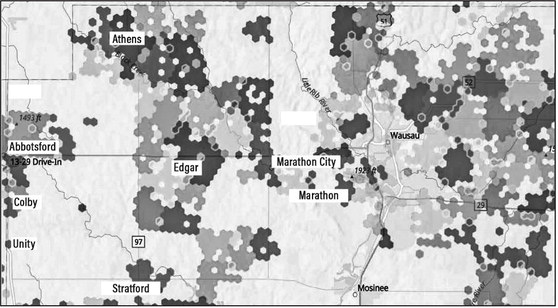Monarch butterflies listed as “threatened”


On December 12th the USFWS announced the listing of monarch butterflies as “Threatened” under the Endangered Species Act of 1973. And yes, a lawsuit was involved. This listing represents the largest geographical listing of any species under the act. From Duluth to Dallas, from the Jersey shore to an LA beach, monarchs live.
Most of us are familiar with the Endangered Species Act from the listing and recovery of species like the bald eagles. And who can forget the 1974 listing of gray wolves in the Great Lakes states or the 1975 listing of grizzly bears in the lower 48. Many feel the Endangered Species Act (ESA) migrated from a tool to protect species at risk of extinction to a weapon for extremist animal rights/anti-hunting groups. They’re correct; those groups do use the ESA as a weapon. The blame lies with politicians who have failed to address this and amend the legislation.
Monarchs have declined in population by 80% since the 1980’s. Most Americans recall a grade school science project with a monarch caterpillar in a jar with milkweed stalks, watching it turn into a chrysalis, and emerge as a butterfly about two weeks later. The monarch reaches adulthood from an egg in 22 - 37 days.
They migrate from places as far north as Canada, down to Mexico for monarchs living east of the Rockies. The western population lives west of the Rockies. It takes five and sometimes six generations for monarchs to complete their migration cycle. The fifth generation migrates to the wintering grounds in Mexico’s oyamel fir forest in Mexico’s States of Mexico and Michoacan and doesn’t breed until they begin migrating back north.
Scientists assess the population decline of monarchs comes from many sources, habitat loss ranking the highest. Both in the butterflies’ wintering grounds and in their breeding grounds in the U.S. and Canada. Herbicide use is also listed, and of course, climate change gets thrown in. This listing only protects 4,395 acres in seven coastal California counties. This precludes federal agencies from altering or destroying monarch habitat and pertains only to the western monarch population.
For both populations the fate of the butterfly mostly rests with one plant – milkweed. The female monarch will lay up to 300 eggs in her typical lifespan of two to six weeks. But she only lays those eggs on milkweed. The milkweed provides food for the larvae (caterpillar), without milkweed no eggs or caterpillars survive.
The adult monarchs feed on the nectar of many types of flowers, especially prairie flowers. USFWS officials describe habitat creation as planting flowers and milkweed to connect areas of existing suitable habitat.
Incidentally, prairie flower patches with milkweed provide some of the best nesting and brooding habitat for grassland nesting birds, especially upland grassland game birds. Deer like it too. Pollinator cover provides exceptional game cover in grassland areas. And milkweed seeds excel at assessing wind currents when hunting. By simply checking the wind while bowhunting, you might help save the monarchs. Hunters doing more than we get credit for once again.
The subject matter experts on monarchs from USFWS distinguish the difference between monarch’s landscape needs versus say grizzlies or wolves landscape needs. Those species require large expanses of land, monarchs don’t. They point out that urban areas can participate by mixing in some milkweed in their flower gardens.
Other ideas involve ditch side plantings of flowers and milkweed. The I-35 corridor runs from Duluth to Dallas. Those are some ideas for habitat mitigation for monarchs and other pollinators.
The Threatened instead of Endangered designation under the ESA allows teachers and parents to continue to use a jar with milkweed and monarch caterpillars to captivate the minds of children. The truth is - the adults enjoy the whole thing as much as the kids.
Maybe your childhood teacher told you that the fifth generation, in the monarch migratory cycle, lives up to nine months and they fly up to 3,000 miles to their wintering grounds. They fly at elevations up to 1,200 feet and often travel more than 100 miles in a day. They use favorable wind currents to aid in the migration. They need plenty of nectar on their migration.
Whether this simply ends up being another method for extremist groups to thwart common sense and science, like with wolves, remains to be seen or not. Maybe this means more nesting cover for gamebirds in the end. But when temps plummet, thinking about monarchs feels warm.
THROUGH A
DECOY’S
E
YE
BY
CHUCK K OLAR LOCAL OUTDOORSMAN






